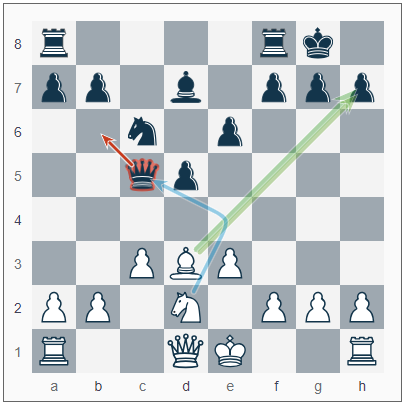Chess Analysis Spotlight – Annotated Variations
DecodeChess is all about explaining. As the first chess analysis software to ever provide rich language to explain the moves of a chess engine, we take our pedagogical goals very seriously. Today we will show you how to to make more use of our annotated variations, which are an inseparable part of the explanations.

An example of an annotated variation that exemplifies the explanation in hand
Explanations Powered by Variations


However, we noticed that most users look at these explanations and do not bother expanding them (+) to follow the path on the board, consequently missing a great feature of DecodeChess and an important chess learning tool – annotated variations!
When you expand an explanation, you are able to follow the sequence of moves that represent the concept in hand. These annotated variations are a pure result of our algorithm’s work. They are not provided by the chess engine whatsoever! You can basically imagine a chess coach explaining the line on a chess board and all you need to do is follow it and use your logical reasoning to learn from it.
In most, cases, each explanation will include more than one variation, which makes sense because more than one sequence of moves can usually bring the same outcome.
Let’s Look at an Example
You’re welcome to paste this FEN into the Import option: r4rk1/pp1b1ppp/2n1p3/2qp4/8/2PBP3/PP1N1PPP/R2QK2R w KQ – 0 13


If you expand the explanation for the first move of the best line (bxh7+), you will see the chain of events that allow the exposure of the king and the checking with the queen at h5.
You can click on the moves with your mouse (or touchscreen) or even use the keyboard arrows to move right and left through the variation. The board will show the pieces moving and will help you visualize the process.
The annotated variation includes verbiage as well, making it easier to read and follow the ideas behind the move!
That’s it, we hope this helps! Now, head over to the DecodeChess app and continue decoding:

